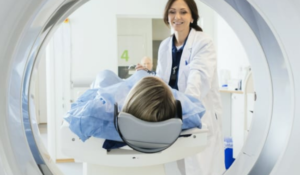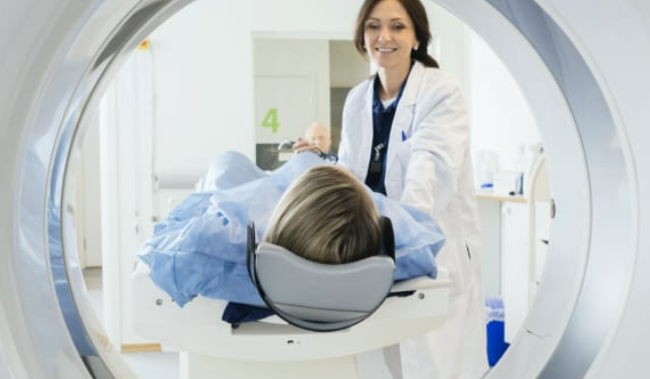MRI Scans: What a Patient Should Know-MRI scans are a major part of medicine and help doctors take a look inside the body without surgery. This helps doctors diagnose health problems by creating detailed images of organs and tissues. Many may feel apprehensive or unsure about what an MRI comprises, and understanding the process eases those concerns.
Knowing some of the basics of how MRI technology works and what a patient can expect makes quite a big difference. This process involves lying still in a machine that uses powerful magnets and radio waves. Proper preparation will ensure that the scan is accurate and goes smoothly.
Knowing about MRI empowers the patient and enriches his or her healthcare experience. Understanding the procedure and the purpose of it could more prepare them for appointments with confidence and clarity.
Key Takeaways
- MRI scans create detailed images to help diagnose health issues.
- Preparing for an MRI will go a long way in making one more comfortable and the scan more accurate.
- Knowing what to expect can help alleviate some anxiety about the procedure.
Basics of MRI Technology
MRI technology is based on sophisticated science, which allows the fine and minute details of body imaging. Grasping the key elements of it will allow the patient to feel more comfortable and informed about what will actually happen during an MRI scan.
Science behind MRI
MRI, or Magnetic Resonance Imaging, produces pictures of organs and tissues in the body by using strong magnetic fields and radio waves. To generate the images, a strong magnetic field is employed to align the protons in the hydrogen atoms of the body.
These protons are knocked out of alignment when the radio waves are applied. As they return to their natural state, they emit signals. A computer then captures these signals and converts them into images. This modality produces high-resolution images with no ionizing radiation; thus, it is generally safe for most patients.
Components of an MRI Machine
An MRI machine has several major components. The major part is the magnet, which provides the magnetic field required for the process of imaging. Most often, these magnets are superconducting or permanent.
Other major components include:
- Radiofrequency Coils: These coils send and receive the signals from the body.
- Gradient Coils: These help modify the magnetic field, improving image resolution.
- Computer System: The computer system processes the signals and produces detailed images that are to be analyzed by the physician.
These put together allow acquisition of clear and precise images of internal structures.
Types of MRI Scans
There are numerous types of MRI scans. These are used according to the various needs a patient may have. Each type has specific uses and perspectives of view it can give.
Conventional MRI: This is used to provide standard images of internal organs inside the body.
- Functional MRI: This is used to study activity in the brain, typically by detecting changes in blood flow.
Magnetic Resonance Angiography: This deals with the study of blood vessels through the provision of images about arteries and veins.
The type of MRI to be recommended for a patient by a healthcare provider will determine the kind that will suit his or her condition in order for him or her to be appropriately imaged.
Preparation for MRI Scan
Patients should be appropriately educated on the ways to prepare for an MRI scan to make the procedure as smooth as possible. Preparation includes steps to take in advance of the appointment, what happens during the scan, and important safety information.
Before Your Appointment
This will incorporate all the medical conditions a patient may have prior to visiting the MRI facility. For example, allergies, claustrophobia, pregnancy. On the same note, implants or devices that are like pacemakers and metal joint replacements are to be discussed with the doctor by the patients.
It is often advised that a patient be dressed in comfortable clothes with no metal pieces whatsoever. Patients may be advised to avoid clothes with metals like jewelry and watches. If the patient is to be given the contrast dye, it will be beneficial on their part to have lots of water in advance. Also, other special instructions from the physician must be discussed by the patients.
During the Scan Process
Once in the MRI room, the patients will be made to lie on a table going inside the machine. The technicians will position the patients very carefully because the tests are very accurate. MRI is very noisy; however, headphones are usually provided to block out some noise.
During the test, patients will be required to stay still during the test that may take 15-60 minutes, so it is important they gesture for their pain or anxiety. There will always be some trained personnel around the technicians and also monitor the patient from a different room.
Safety and Contraindications
The important concern regarding MRI is patient safety since the procedure utilizes a powerful magnet, not everyone can undergo MRI. Patients with metal implants, such as surgical clips in the brain or particular types of pacemakers cannot undergo MRI.
Patients should also discuss, prior to the examination, any health conditions that will affect the use of contrast dye, such as kidney problems. These, and all safety measures from the care team, are important in preventing complications.

Also Read :
- Advances in MRI Technology: What’s Next for Medical Imaging?
- The Science Behind MRI: A Deep Dive into Magnetic Resonance Imaging
- How MRI Technology is Transforming Medical Diagnostics
- MRI-Guided Neurosurgical Interventions in Brainstem Lesions
- MRI-Guided Neurosurgical Interventions in Brainstem Lesions
